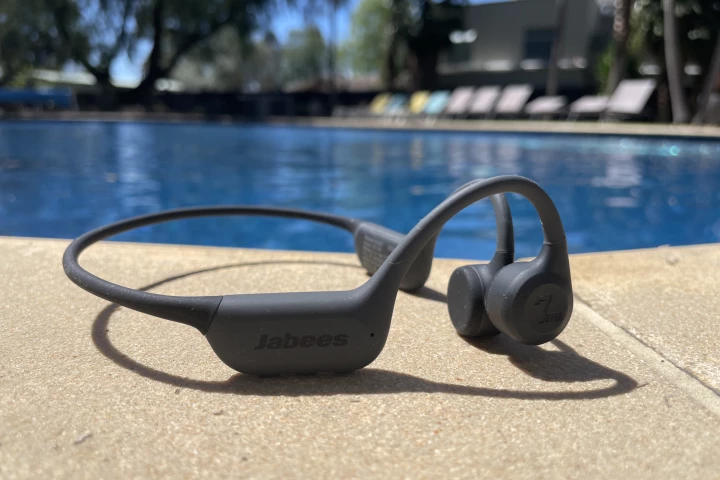Bone Conduction
-
Bone conduction offer the freedom of listening to music while staying aware of your surroundings – and now you can take this tech underwater with Jabeees' 7Seven headphones. And, at US$79.99, they keep pace with many of their more expensive competitors.
-
Be it wrestling with headphones or earbuds, or sharing a bed with someone that prefers silence, drifting off to sleep with an audio soundtrack is not always practical. But this handy, inexpensive speaker is here to keep the peace in the bedroom.
-
We’ve tested 50 different waterproof headsets over the years, and a clear favorite emerged when Zygo launched its headphones. This week a 2nd-gen Zygo was announced, with enhanced audio, longer range, longer battery life, and on-the-go charging.
-
There are many situations in which blind people don't necessarily have to see what they're holding, they just need it described to them. An experimental new wearable device, known as AiSee, is designed to do that very thing.
-
Orange Amps took a page out of Marshall's book a few years back and entered the headphone space with the O Edition cans. Its latest product in the mobile audio space employs bone conduction tech to deliver an open ear wireless listening experience.
-
Diving deep underwater while holding your breath can be risky, which is why many freedivers wear a dive computer on their wrist. The face-worn Oxama device is claimed to offer several advantages, including the fact that it speaks to its wearer.
-
Swim coaches have a difficult job, as they have to shout in order for swimmers to hear them – and even then, they still may not be heard. The Sonr system is designed to address that problem, using one-way radio communications.
-
It looks like a fitness tracker, acts like a smartwatch, yet has has no buttons or screen. It also plays audio when you touch your finger to your ear and is gesture and voice-controlled. It's called Get and its creators think it could change the way we connect with each other and our information.
-
Back in 2010, Sonitus Technologies introduced a novel in-mouth hearing aid called the SoundBite. Now the US Department of Defense has awarded the company a contract to develop a wireless two-way comms system that clips to a user's back teeth.
-
Besides talking into a shoe, the most spy-like way to take a phone call is to just stick your finger in your ear. Orii allows you to do that, thanks to bone conduction technology that sends vibrations through your hand to directly stimulate the little ear bones responsible for hearing.
-
Not only is it unsafe to wear earbuds while cycling or riding a motorbike, but it's also a hassle to fit those buds on underneath your helmet. That's why Ahead was created. It gets mounted on the outside of any type of helmet, and transmits streamed audio into that helmet via vibrations.
-
Listening to music while out for a run can help make exercise less of a chore and much more fun. The Conduit Sports headphones have both bone conduction technology, which means that users can still hear what's going on around them, and integrated earbuds that cater for a more isolated approach.
Load More











